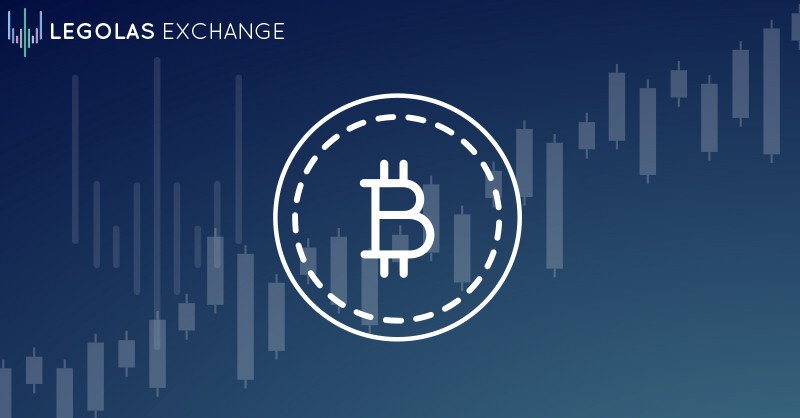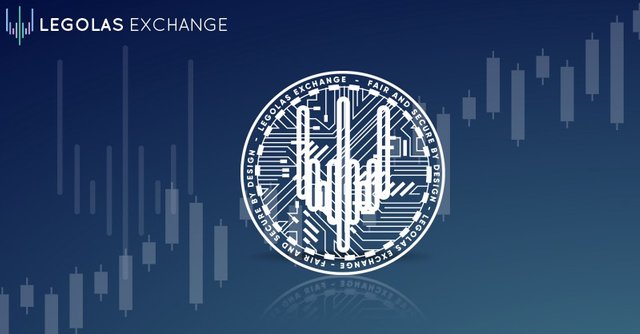Legolas Exchange will only accept BTC during the LGO token sale. Here’s why.

Initial Coin Offerings, or ICOs, have raised the equivalent of more than 3.5bn$ so far this year. During an ICO, a Blockchain project will sell its incoming tokens for established cryptocurrencies such as Bitcoin (BTC) and Ether (ETH) — and sometimes fiat currency.
At Legolas, we have made the decision to accept Bitcoins, and Bitcoins only in our ICO.
CAVEAT: Thanks to our partnership with ShapeShift, participants will be allowed to buy LGO tokens with other Altcoins. Legolas Exchange, however, will only receive BTC.
In this article we present existing ICO formats, their pros and cons, and detail the chain of decisions that led us to the conclusion that a Bitcoin-only ICO is more fair and efficient than other alternatives.
We recognize that the context will change and blockchains will evolve, and hope to have an open conversation on the subject within the community.
This article is not meant to be an opinion on each blockchain merits and deficiencies, rather the goal is to analyze the strengths and weaknesses of several ICO formats.
Standard model: ETH only
Perhaps the standard today, ICOs that accept ETH only have become more frequent and have democratized token launches by opening new funding avenues to teams and projects. Presented by the Ethereum foundation as one of the main use of the Ethereum protocol:
“Using Ethereum, you can create a contract that will hold a contributor’s money until any given date or goal is reached.” (source Ethereum.org).
We find several limitations and even inaccuracies to this methodology however:
Ether is not, and is not meant to be, a currency:
The term “money” is used for “Ether”, a noteworthy choice given that Ether was not meant to become a currency competing with Bitcoin, but rather a fuel needed to run decentralized programs. Even though Ether has become increasingly used for trading and as a store of value, there is no indication that payments in Ethers are or will become more common. In sharp opposition to Bitcoin that is now accepted in online stores such as Overstock or Expedia.The Ethereum community is dedicating resources improving the robustness and efficiency of its blockchain, not its adoption in real life monetary transaction.
We find the choice of the word “money” to be inaccurate and in opposition to the goals that the Ethereum is working on. Finalizing PoW or PoS evolutions and protocol functionalities is in our opinion vastly more important to the success of Ethereum than attempting to have ETH compete with BTC on the universal cryptocurrency ground.
Ether contributions cannot come from exchanges:
ICO smart contracts can be complex and custom made to each project’s needs, however they work on the common basis whereby investors send ETH to a given Ethereum address, and receive tokens of the project in the Ethereum address that was used to send the funds. This mechanism is revolutionary in many ways, one of which is that it creates and algorithmic escrow agent receiving ETHs and sending tokens. It removes the possibility of fraud and gives comfort to ICO investors. A major limitation however is the fact that the sending address must be visible to the smart contract administering the ICO. As a result, sending ETH from an exchange like Bitfinex, Poloniex or Kraken will result in the smart contract seeing “Poloniex Ethereum address” as the sending address, and not the account owner. In this example, the ICO smart contract would send the tokens to Poloniex which would not be able to credit it to the legitimate account owner. With a large majority of ETH holders storing their ETH on exchanges, conducting such an ICO creates a substantial limiting factor for many small investors who may not be equipped or knowledgeable enough to have ETH outside of major crypto exchanges.
Frauds and hacks:
As ICO smart contracts have become complex, so have hacked and stolen Ether situations. A comprehensive analysis of each occurrence would be needed to draw conclusions and this is not the focus of this analysis, however one cannot forget the fact that 300M USD worth of ETH were stolen early November 2016 because of a bug in the Parity Wallet smart contract.
Reduced Security and Multisig:
Some projects such as Civic or MyEtherWallet create individual Ethereum addresses for each investor, thus allowing each contributor to send ETH from any address or collection of addresses, including exchanges. This way around is esthetic and also provides more opacity to the project and more anonymity for the investors. We respect this methodology and recognize its merits. However it creates one essential operational risk: dealing with hundreds or thousands of single signature wallets. Besides the risk of getting confused with so many addresses, which can be dealt with by serious and well organized teams, one need to consider that Ethereum is not built to support multi signature wallets in a simple way. In fact, creating a multi-signature wallet on Ethereum requires the creation of a smart contract which is extremely hard to perform hundreds of time without creating exponential security risks, as the Parity wallet bug once again revealed a few weeks ago.
Conclusion on ETH-only ICO:
**Pros: **standard, transparent, reassuring, algorithmic escrow, algorithmic investment
Cons: excludes currency transfers from exchanges, hack-prone, ETH not meant to be a currency, no scalable multisig wallets to generate one per investor.

Legolas Model — Bitcoin only
The Legolas Exchange ICO will only accept Bitcoin. The ICO has several phases, most of which are invitations-only. As a result, the conclusion we have reached may not apply to all projects, however the list below will be relevant to most Token sales:
Bitcoin is the reference cryptocurrency:
Bitcoin is the store of value, considered as a currency in many countries (Japan, Australia, Ukraine, Venezuela) and will be in most countries eventually. It is the cryptocurrency that is most easily converted to fiat currencies, which is the goal of raising funds for an ICO.
Bitcoin makes it easy to create many multisig addresses
The Bitcoin protocol makes it easy to create thousands of addresses to receive BTCs from ICO contributors in a way that each wallet has multi-signature security features. Indeed, the multisignature feature is native to the Bitcoin technology, whereas it has to be coded into a smart contract on Ethereum. Smart contract coding is still a relatively young art, and is still lacking the maturity and security necessary to handle ico funds. Having an integrated multisig solution in the Bitcoin blockchain is undoubtedly a major advantage over Ethereum when it comes to raising ICO funds.
And as a result accept contributions from exchanges
Creating a single address for each investor allows contributors to send BTC from exchanges or from multiple wallets and accounts. As a result, investing in ICOs is much easier for investors using BTC rather than other cryptocurrencies.
Alternative model: Multi-currencies
Several ICO successfully accepted a mix of ETH, BTC and sometime multiple other cryptocurrencies in exchange for their Token. The recent USD200mm+ Tezos token sale is a good example where both BTC and ETH were accepted.
Although seemingly a better option than limiting investors investments to only one cryptocurrency, one major issue is the determination of the exchange rates between each cryptocurrency and the token being sold. In Tezos’ ICO, the reference currency was Bitcoin. As ETH/BTC lost more than 40% between the start and the end of the ICO, investors who had sent ETH lost a substantial part of their investment even before the end of the ICO. This loss compared to investors who sent Bitcoins is unfair as ETH investors did not intend to speculate on the price of ETH relative to BTC, but rather to acquire Tezos tokens.
Conclusion
To conclude, even though every strategy has its own merits, we believe that investing in BTC is the model which is the most fair, the most secure and the most investor-friendly.
About Legolas
Legolas Exchange is a demonstrably fair, bank-backed premium exchange for institutional investors. It incorporates a decentralized ledger within its proprietary centralized platform in order to guarantee the inalterability, temporality and transparency of the order book and ensure a fair trading environment.
Public Sale starts February 1st at 12pm GMT!
If you like what you read, please don’t forget to like and share the post !
Hi! I am a robot. I just upvoted you! I found similar content that readers might be interested in:
https://decentral.market/2018/02/01/ico-why-we-only-accept-bitcoins/
Downvoting a post can decrease pending rewards and make it less visible. Common reasons:
Submit